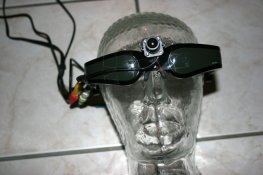Forget darkroom safelight for modern RA-4 papers like Kodak Ultra Endura or Fuji Cristal Color.
It will fog your print. Even if not visible, it will soften your print and/or add colour shift.
I first tried a Na-Lamp, very dim. It works but only at a distance of >3m and indirect light + additional density filter.
It is good for finding the door in the room but you nearly see nothing with such a lamp.
Then I tried several wavelengt selected yellow LEDs. No way!
I now work in totally darkness using video glasses combined with an infrared sensitive camera taped on the glasses plus IR-spots in the darkroom (>900nm).
I see my room now very very bright and can develop by sight. Note that used RA-developer gets completely water-clear under IR, so you have totally visual control when developing in trays. I even use the camera system for cutting sheets from the paper roll, and I also can develop sheet film (B/W, C-41 or E-6) in trays. Very good for pushing/pulling or developing very old films with unknown developing times. Once you spent about 250$ in such equipment, you NEVER want to use any safelight in your darkroom again!

The only disadvantage when enlarging colour materials is, that negatives or slides become completely clear under IR. So when doing special work, for example contact-copying slides to negative film, you must mark the picture position with a pen because you just see a blank sheet of film.
A RA-4 print looks like a normal B/W print under IR, but once you put it into the bleachfix, it becomes completely white. The silver print is visible under IR but the colour print is transparent.
Joachim



 That's why I save mine for color and don't use it for black and white anymore, though I could read a newspaper by it set for black and white safety.
That's why I save mine for color and don't use it for black and white anymore, though I could read a newspaper by it set for black and white safety. But all the above discussions about doing it in full darkness or using fancy gear to see in dark has left me gun shy. Its easy to see why very few novices like me would be willing to try RA-4. But I am going to give it a try somehow or the other.
But all the above discussions about doing it in full darkness or using fancy gear to see in dark has left me gun shy. Its easy to see why very few novices like me would be willing to try RA-4. But I am going to give it a try somehow or the other.

